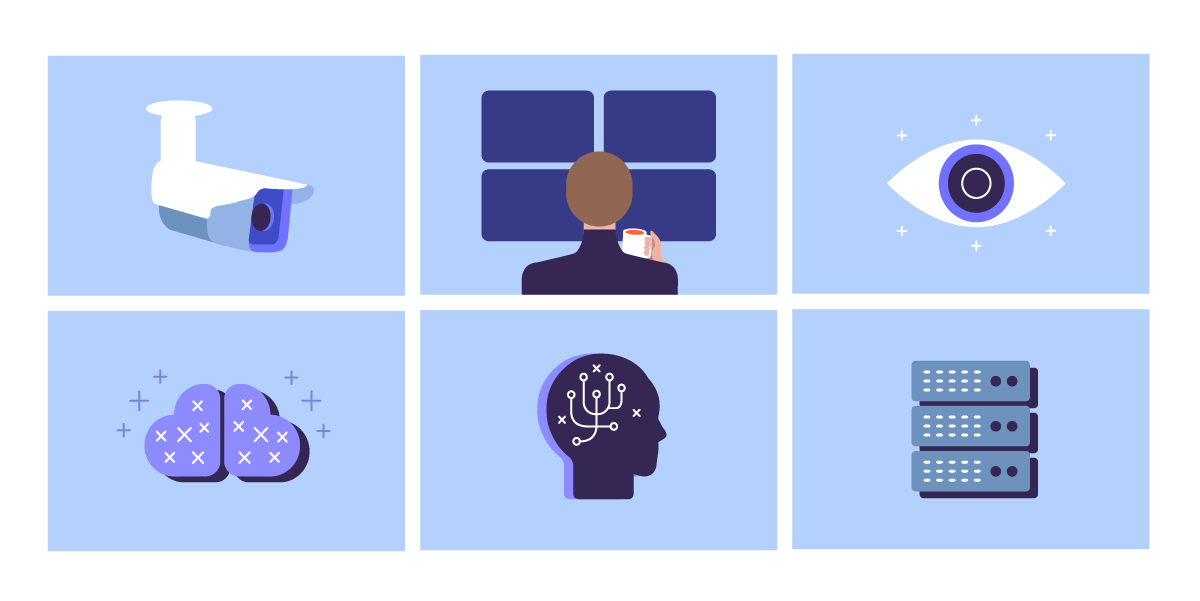5 Top Physical Security Trends to Watch in 2022
- Featured Post
- Physical security

We asked Brian Baker, Chief Revenue Officer at Calipsa, to give us this thoughts on where he thinks the industry is headed in the coming year, and the trends he predicts will shape security in 2022.
As we head into 2022, it’s time to consider how you can develop your security business’ resilience, not just for the next 6 months to a year, but for the long term. Now more than ever, security businesses need to consider the macro trends that are shaping the growth of the industry as a whole when they plan for the future.
This year, we’ve had to rethink our relationship with technology, both at home and in the workplace. Many businesses have adapted to a more flexible way of working, which has resulted in an even greater reliance on technology than before. Yet firms also have to juggle a new way of working with growing concerns around supply chain delays and staff shortages. Will these operational challenges result in changes to physical security?
Here, we answer those questions and share Calipsa's top five physical security trends to watch in 2022.
1. Artificial intelligence remains top of the agenda
Artificial intelligence (AI) is still the greatest force for change in the security industry. Topping our trends list for another year running, AI’s potential continues to grow as machine learning improves.
AI in the security market was valued at USD 5.08 billion in 2020 and is expected to reach USD 14.18 billion by 2026. AI-powered technology has a range of use cases including proactive monitoring, video analytics, false alarm filtering, improving operator efficiency, detecting anomalies and more.
The biggest shift we have seen in recent years is the point at which AI can really be useful. Rather than just being a forensic analysis tool that is used after an incident, AI’s capabilities and speed mean that it is fast becoming a preventative tool, enabling security professionals to stop crime from taking place.
As we move towards a model of preventative security, predictive data analytics is likely to gain even greater popularity. Advanced AI techniques like machine learning use predictive analytics to make statistical decisions about vast swathes of data - a method that is used in intelligent video analytics and other proactive monitoring solutions.
If you’re interested in finding out more about how AI can be used as a preventative security tool, check out our free whitepaper on the subject:
2. The cloud is gaining popularity, along with remote security
The move towards more remote security - especially remote video monitoring - was happening even before the Covid pandemic. However, Covid certainly accelerated the adoption of remote monitoring, and with it, adoption of cloud technology. Last year, we predicted that cloud technology would grow in popularity amongst security experts - and this trend looks set to continue in 2022.
In Calipsa’s 2021 Annual Report, we discovered that our respondents have started to embrace the possibilities of the cloud. 75% of the businesses we surveyed used cloud-based video analytics, an 8% increase on the previous year. Almost 1 in 3 respondents (32%) now use a completely cloud-based solution.
Moving to the cloud offers businesses many benefits - not least the ability to scale security solutions alongside business growth, easily and cost-effectively. Many security solutions are moving towards the software as a service (SaaS) model, which allows for this kind of flexibility on a subscription basis.
A fully cloud-based model removes the time and cost of on-premise devices and storage, which can become outdated and unfit for purpose as businesses evolve and technology advances. However, some platforms like Calipsa can integrate with all kinds of camera models - providing a quick and cost-effective upgrade to hardware that is otherwise old and outdated.
Cloud technology also allows the security industry to benefit more from technologies such as machine learning, while providing greater connectivity to other areas of the business.
3. Staff shortages could pose problems - but AI could help
In the UK, a “catastrophic” shortage of security guards is threatening the hospitality and nightlife sectors, according to the Night Time Industries Association chief executive Michael Kill. Recruiting on-premise security guards and door staff has become harder as a combination of late hours and zero-hours contracts appear to be deterring applications. However this difficulty to recruit candidates is also the case in other areas of security, such as video monitoring.
One of the key findings from our 2021 Annual Report was our respondents’ growing concerns around the shortage of staff. Many security businesses are struggling to recruit new employees.
When asked what the greatest challenge had been in the past year, 31% cited staff shortages - almost a third of all respondents. What is most telling is that this figure has risen by 20% since 2020.
Over half (55%) of the businesses we surveyed told us that staff shortage / sickness was their greatest operational challenge in the past year. It is true that a reduced workforce poses significant operational challenges for any business. However, this is where technology could relieve the burden on many overstretched security companies.
Smart technology such as intelligent video analytics can monitor multiple cameras 24/7, looking for genuine threats whilst filtering out false alarms. This allows security professionals to focus on verifying alarms, alerting the authorities, and maintaining customer service level agreements. As we saw above, artificial intelligence is fast becoming an effective preventative tool, enabling security businesses to do more, with less.
4. Supply chain disruption could have security implications
Along with staff shortages, 2021 was the year of supply chain disruption. According to Accenture, 94% of Fortune 1000 companies have seen supply chain disruption as a result of Covid-19. When goods can’t move quickly from A to B, this has security implications - for the cargo and for the vessel/vehicle.
Truck drivers have been held in queues for days on end due to changing Covid restrictions at border crossings, and the movement of raw materials and parts worldwide has slowed its pace significantly, causing backlogs in multiple sectors. When cargo remains stationary for long periods, there is a risk that criminals will move in, seeing it as an easy opportunity.
According to BSI & TT Club’s Cargo Theft Report, 71% of cargo theft took place on or around trucks (lorries). As we discovered in our guide to supply chain security, there are many “weak links” in the supply chain where criminals can intercept goods - from loading and unloading points, to simply slashing and grabbing goods from a truck on a pitstop.
While technology is being used to protect cargo and drivers, according to SIA’s 2022 Megatrends report, even this poses risks: “The concern is the ability to put full trust in the source code, firmware, system-on-chip and other hackable elements that exist with any product or solution.”
In other words, the systems that enable companies to track and trace their vehicles are also susceptible to breaches. This means that even security technology needs to be secured. Which brings us to our final trend…
5. Physical security and cybersecurity are merging
The line between physical security and cybersecurity is becoming increasingly blurred. It is just as important to protect your security devices and digital assets, as it is to protect your physical assets.
For some businesses, cybersecurity risks remain a barrier to tech adoption. According to IFSEC Global’s 2021 Video Surveillance Report, 64% cited cybersecurity as a barrier to cloud video adoption. This was the number one barrier; interestingly, the third barrier was a “lack of understanding / expertise about the cloud”. Wider education around cybersecurity risks - both for the cloud and for devices - is key for security businesses moving forward.
After all, it is not just the cloud that poses a security risk. Many interconnected smart devices - known as the Internet of Things (IoT) - can also leave companies vulnerable. If one device is weak to attack, it is possible for a hacker to use it as an entry point to an entire security system.
In the case of the Mirai botnet attack, malware (known as Mirai) managed to infect many IoT devices, including security cameras. These cameras in turn became “bots” which bombarded servers with web traffic until finally, they became overwhelmed and went offline. This left much of the USA’s East Coast with no internet for nearly a whole day.
Long story short, the systems we now rely on to help us provide customers with the best possible security services are also vulnerable to attack. We recommend you get a cybersecurity professional to assess your systems and stress-test them. To learn more about how to protect your security systems from attack, check out our free ebook on cybersecurity and video surveillance:
So there you have it, our top physical security trends to watch in 2022 and beyond. In a growing industry, make sure you stay ahead of the trends to ensure consistent growth for your business.
Want the inside scoop on how the video monitoring industry performed in 2021? Download Calipsa’s 2021 Video Monitoring Report for free to learn more about industry performance and technology adoption.
Editor’s Note: This post was originally published in Dec 2020 and has been updated for accuracy and comprehensiveness.










2 comments